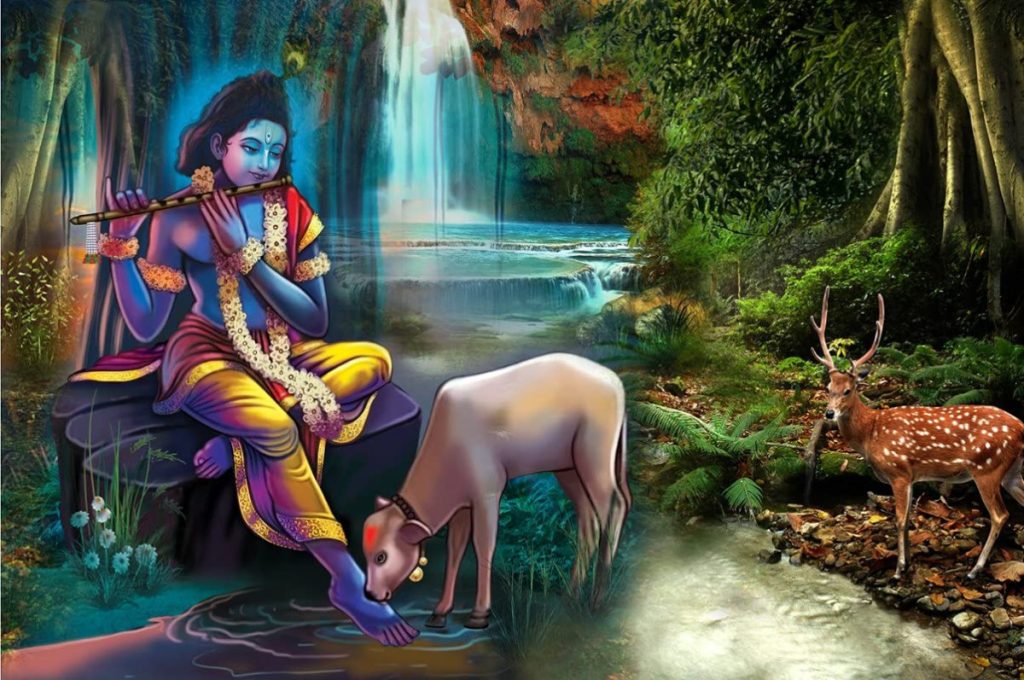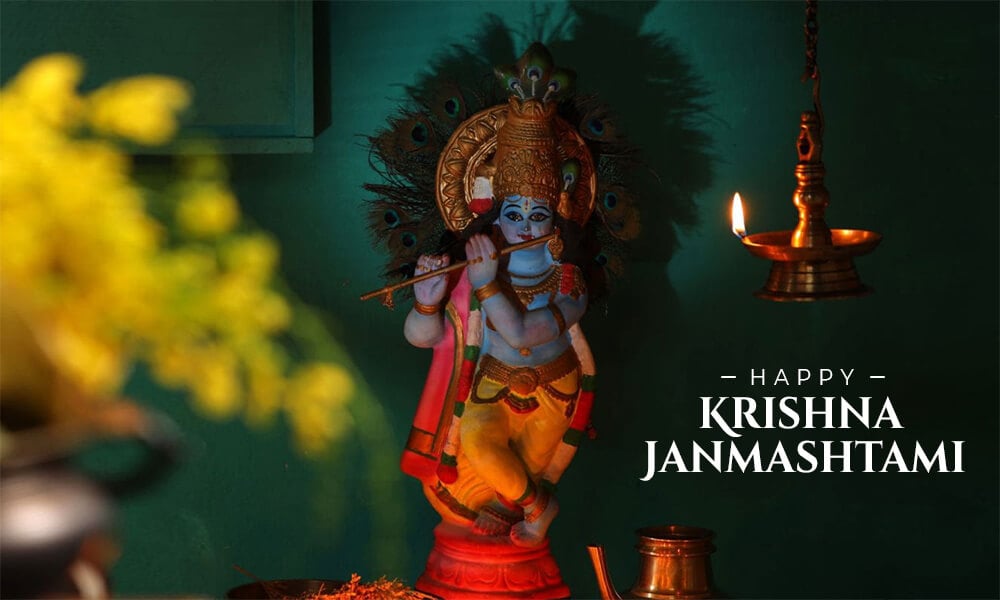Lord Shree Krishna, also known simply as Krishna, occupies a unique and cherished place in the hearts of millions as the eighth avatar of Lord Vishnu in Hinduism. Spanning over 5,000 years, his life unfolds as a timeless saga brimming with love, divine miracles, and profound wisdom. Venturing into the captivating narrative of Lord Krishna’s existence, also we embark on a celestial journey characterized by playful childhood antics, entrancing melodies, and pivotal roles in epic battles. Furthermore, as we delve deeper, let us embark on a spiritual odyssey, unraveling the essence of Lord Shree Krishna’s life, teachings, and the enduring influence he exerts on the world.
1. Birth and Early Life of Lord Shree Krishna:
- Lord Shree Krishna, often referred to simply as Krishna, was born in Mathura, an ancient city in India, approximately 5,000 years ago.
- His birth celebrated as Krishna Janmashtami, is a significant Hindu festival. It is also celebrated with great enthusiasm.
- He was born to King Vasudeva and Queen Devaki, but due to the threat posed by Devaki’s brother, the evil King Kansa, Krishna was secretly taken and raised by his foster parents, Yashoda and Nanda, in Gokul.
2. Childhood and Miracles:
- As a child, Krishna was known for his playful and mischievous nature, endearing him to people.
- He earned the nickname “Makhan Chor” (butter thief) because he would steal butter and yogurt from the homes of Gopis (milkmaids).
- Krishna’s melodious flute playing (Murali Manohar) was enchanting and also attracted everyone, including animals and birds.
3. Divine Leelas (Miracles):
- Krishna performed numerous miracles during his childhood, including defeating demons like Putana, Trinavarta, and Aghasura.
- The most famous of his miracles was lifting the Govardhan Hill on his little finger to protect the villagers from torrential rains sent by Lord Indra.
4. Role of Lord Shree Krishna in the Mahabharata:
- Krishna played a pivotal role in the Mahabharata, one of the greatest epics of Hindu mythology.
- Moreover, he served as the charioteer and guide to Prince Arjuna during the Kurukshetra War.
- His teachings to Arjuna, known as the Bhagavad Gita, provide profound insights into life, duty, and spirituality.

Also Read: Silver pomfret declared as ‘state fish’ of Maharashtra
5. Divine Love and Relationships:
- Krishna’s love and relationship with Radha are celebrated for their divine nature, symbolizing the union of the individual soul (Atma) with the Supreme Soul (Paramatma).
6. Krishna’s Forms:
- Krishna is worshipped in various forms, each representing different aspects of his divine personality. Popular forms include Baby Krishna (Bal Krishna), Youthful Krishna (Kishore Krishna), and Krishna playing the flute (Venugopal).
7. Raas Leela:
- The Raas Leela is a divine dance performed by Krishna with the Gopis. It also symbolizes the spiritual union of the individual soul with the divine.
8. Krishna Temples:
- There are numerous temples dedicated to Lord Krishna across India and also around the world.
- The Krishna Janmabhoomi temple in Mathura and ISKCON (International Society for Krishna Consciousness) temples are among the most famous.
9. Philosophy of Lord Shree Krishna:
- Krishna’s teachings emphasize selfless devotion (Bhakti), righteousness (Dharma), and the importance of performing one’s duties without attachment to the results.
- He further encourages individuals to surrender to the divine and seek spiritual growth.
10. Impact on Hinduism:
- Krishna’s life and teachings have had a profound impact on Hinduism, shaping its philosophy, spirituality, and cultural practices.
- His stories and wisdom continue to inspire millions of people worldwide.
Altogether, Lord Shree Krishna’s life is a source of spiritual guidance, love, and wisdom for devotees and continues to be celebrated and revered in Hinduism and beyond.
Also Read: World Samosa Day: Celebrating the Global Icon of Flavor











